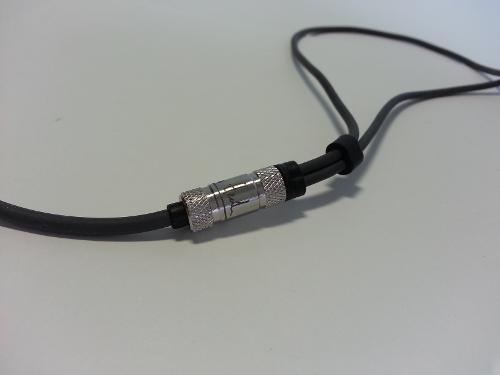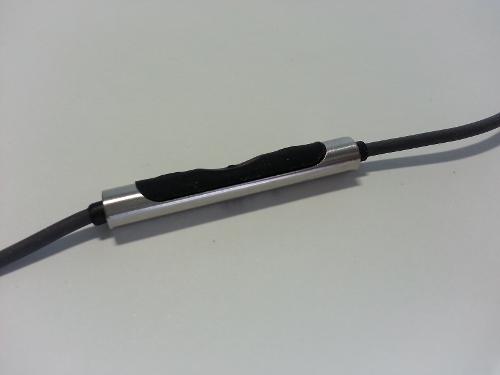
Above is my video review of the earphones, including how they are worn: Like, Subscribe and Comment!
I know what most are probably thinking… They look a lot like a the Shure SE215. In many ways they are! I’d like to think of them as a Bluetooth Se215, which can be very desirable in today’s “headphone-jackless” world (I’m looking at you, IPhone 7).
However, they also come with the standard “wired” cable, that we are all familiar with. As you probably guessed, the Model 3 has detachable cables (catering to both the “old school” wired and the “modern day” wireless listener).
Disclaimer- I was provided with the Model 3 earphones from Advanced for review.
Accessories and Features:
- Hard-shell carrying case
- 3 sets of silicone eartip (only S and M)
- 3 sets of foam eartips (overly fast expanding foam)
- 1 wired mmcx cable with a 1 button remote/mic
- 1 mmcx Bluetooth cable with a neck-charging dongle – with range up to 10m and a battery life of 5 hours (connecting via magnet)
- Green micro USB cable (Amazingly made cable, supple, and well relieved)
*note for this review I used the westone star tips (I was able to get a much better seal with them, then what came in the box)
Features- 9/10 (can easily go wired or wireless in a (mmcx) snap) pun intended

Design:
The Model 3 was “modeled” (pun) after the generations of ergo-fit stage monitor style that’s popularized after customs, the Model 3 turned to a cross hatched, transparent earpieces. (I’m very lukewarm with the cross hatched design, but the transparent housing allowed for viewing the inside the earpieces was very interesting!)
Overall: 7/10


Build Quality:
The earpieces are made of entirely plastic, however my concern lies mostly on the long and thin nozzle, require a bit of care when removing them from the ear (or when changing eartips).
The detachable (universal) mmcx cable sockets feel nicely made, sturdy and solid. I never had any issues with the (a shoddy) connection with either of the provided or my previously owned mmcx cables.
The Bluetooth cable is long and beefy (with a fixed memory shape). The cable is very thick and the buttons have nice click to them.
I have a few criticisms towards the Bluetooth cable that include:
- Improving the tactility between the buttons, (maybe with a raised top and bottom button? Or including big tactile bump to prevent “misclicking” the wrong button)
- Another criticism is that I felt the earguide section connecting the earpieces to the Bluetooth receiver is a few inches too long (the cable tends to flop around when turning the head).
- Maybe also replace the current fixed earguides with more flexible ones (to easily mold them according to the user’s preference).
Overall: 8/10



Comfort:
Ridiculously comfortable! They felt the closest, (I would imagine) to custom- in ears. They slip into my ears easily and I could easily lie on my side with them. I can definitely see myself using them on stage (if I was a performer), simply because they can be used for hours on end because of their smooth and seamless fit.
Overall: 10/10


Isolation:
Scarily good! Dangerously good (with the right tips), I used the westone star tips (the foam tips included expanded too quick), and I was in between the sizes for the included silicone ones. Hence, why I used the westone star tips
The completely enclosed earpieces, fend off outside noises with ease. (with the added Bluetooth conveniences, I easily used during commutes).
Overall: 10/10





Sound Quality:
Advanced has clearly designed and tuned the Model 3 to be a good wired earphone first, that just happens to have a “Bluetooth or a wireless” functionality. To that I they have succeed!
The Model 3 sounds very rich and work well for jazz and vocal centric music.
Bass:
The bass is full with a chunky mid bass, with solid extension down low.
Midrange:
The warm midrange sounds bit veiled but voices have great body, that sounds very smooth and soothing. Sometime, the Model 3 can be a bit too smooth, especially restricting female vocals from “soaring” in a sense, thus sounding a bit restrained.
Treble:
The treble is very laid back, and can sound dark and somewhat lacking shimmer. However, I would be hesitant to call them completely rolled off, maybe just conservatively so. I would imagine this tuning to be favored when performing on stage (where they would be used at higher volumes for music play back and monitoring, thus the listener would not be bombarded with aggressive and sharp treble after a long extended concert).
An admirable trait for Model 3, is that I felt Advanced did a wonderful job matching the “Bluetooth” with its “wired” configuration. The Model 3 sonically bested my very popular Bluetooth set, the ($169-200) Jaybird Freedoms, easily twice the price.
Quick comparison to the Sennheiser Momentum In Ear ($99)
The Momentums while boasting more clarity doesn’t sound as full and natural as the Model 3. The bass appears to be better extended on the Momentums, with less mid-bass bloat. Piano keys seem to jump out a bit more on the Momentums, where as the Model 3 is a bit more reserved, and sound more closed.
Overall: 8/10


Conclusion:
As the world continues going more and more wireless, audio companies have to keep up. However, its nice to see that Advanced still has considerations for the “old school purists” out there, by designing the Model 3 to easily swap between its Bluetooth and it’s wired configurations. A versatile product that would make for a great holiday gift!
Possible feedback:
A shorter upper half (silver section) connecting the earpieces the charging dongle (maybe 1-1.5 inches shorter). --> and maybe forgoing the ear guides entirely
Changing the layout of the Bluetooth controls (for better tactility, raising the bottom and top button considerably, or adding a large bump to each button). Preventing incorrectly using controls.
This can probably be changed via the firmware- but instead of long pressing to increase/decrease the volume, changing it to a short press. Therefore, swapping it out with the media controls (fast- forward,rewind by long pressing). (I’m not sure why Advanced chose to do this differently from the rest of the industry.)
































































































































































































































































































